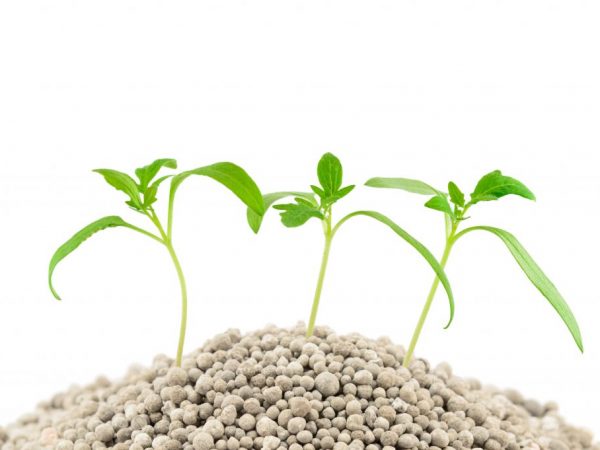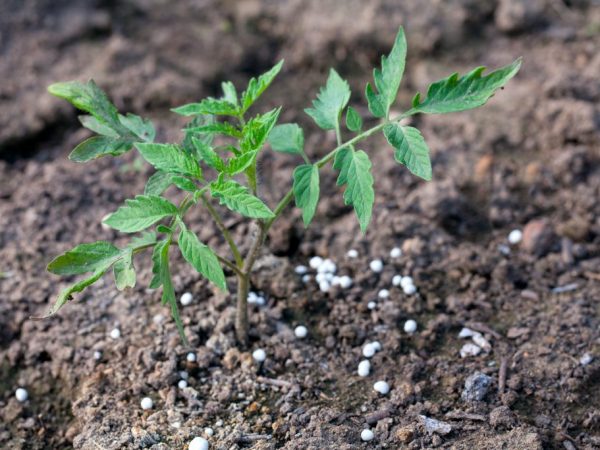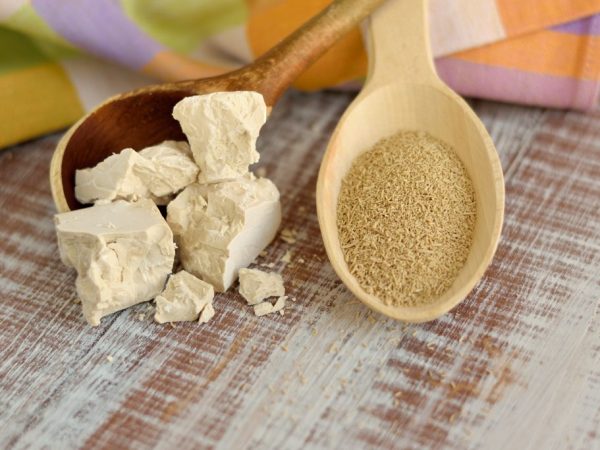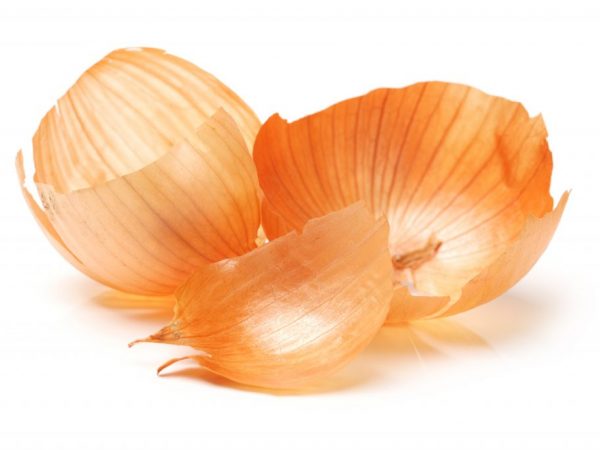Rules for feeding tomatoes
Top dressing of tomatoes during the growing season is a prerequisite for obtaining good crop yields. Proper care will provide plants with fast growth, large and tasty fruits.
- Nutrients
- Nitrogen
- Phosphorus
- Potassium
- Fertilizers
- Mineral fertilizers
- Organic fertilizers
- Fertilizers of a new type
- Fertilization rules
- When and how to fertilize
- Features of dressing in the greenhouse
- How not to fertilize
- Folk remedies
- Feeding with yeast
- Top dressing with bread
- Using onion peels
- Herbal infusion
- Home remedies
- EM technology and tomato cultivation
- Conclusion

Rules for feeding tomatoes
The result will depend on the quality of the drugs that gardeners use, the correct choice of timing and methods of their use. Many useful tips on the use of fertilizers can be found in the books of G.A. Kizim. Including for arranging a garden in an apartment and a vegetable garden on the balcony.
Nutrients
When carrying out dressings, it is necessary to pay attention not only to the need for elements of the nitrogen-potassium-phosphorus triad, but also of other substances. An important component for growing a culture is calcium, as well as a number of trace elements: sulfur, zinc, iron, manganese, aluminum, boron,
Nitrogen
Vegetables need nitrogen to build up green mass. Tomatoes - also for the formation of a sufficient number of ovaries. The signs of nitrogen deficiency are the dropping of the lower leaves, as well as the situation when the fruits are poorly set and grow.
For all the importance of the element for growth and development, nitrogen overfeeding should not be allowed. At different stages, the consequences can be different: fattening of plants (thickening of the stem and leaves, delayed fruiting), deterioration in taste, cracking, ugliness of the fruit.
Phosphorus
Phosphorus is necessary for the formation of the root system, the ripening of fruits. Its lack is evidenced by:
- purple color of leaf veins;
- darkening of the plate;
- reddish tinge of the back.
If the lack of phosphorus is not replenished in time, the leaves curl, a bronze shade of the fruit appears. Such signs are most often noticed in unfavorable weather, during the period of intensive root formation, fruit setting.
When applying phosphorus-containing fertilizers, it is necessary to take into account the structure of the root system of tomatoes. The shank central root absorbs nutrients at a depth of 50 cm or more. The branched roots in the upper part feed from the surface layers, therefore, it is necessary to add the nutrient solution not only under the stem, but also into the trunk circle with a diameter of about half a meter.
Potassium
The element provides high yields, plant resistance to temperature extremes, and improves immunity to various diseases.
Signs of potassium deficiency:
- yellowish or orange coloring of the edge of the sheet;
- old leaves dry and crumble;
- tomatoes ripen unevenly.
If you do not fertilize in a timely manner, irreversible changes will occur: the stems will stop growing, they will become stiff.
Fertilizers
How to fertilize tomatoes? Mineral and organic fats will help to replenish the reserves of nutrients in the soil.
Mineral fertilizers

There are many types of fertilizers
The composition is distinguished:
- nitrogen: ammonium nitrate, carbamide, urea, ammonium sulfate, ammonium sulfate;
- phosphoric: superphosphate;
- potash: potassium sulfate, potassium sulfate (chlorine-containing potassium salts are not recommended to be used, because they increase the chlorine content in the soil);
- complex: ammofosk, nitroammofosk, nitrophoska, azofosk, calcium nitrate and others (contain a complex of elements necessary for tomatoes).
Calcium is an important element for the development of tomatoes. If you do not add the required amount of calcium nitrate to the soil at the right time, the planted plants will not be able to assimilate nitrogen well.
This fat is not common. It can be made at home from ammonium nitrate, water, and slaked lime. When the mixture is boiled, ammonia is released, therefore, safety precautions must be followed, and the resulting mother liquor is a calcium fertilizing for tomatoes.
- Complex mineral fertilizers for root feeding of tomatoes differ little from each other. They contain substances of a nitrogen-potassium-phosphorus complex in various ratios, there is a difference in the methods of production, but they have approximately the same effect on the culture.
- Fertilizer for tomatoes Sudarushka, in addition to the complex, also contains the necessary trace elements, has an antifungal effect. They can fertilize tomatoes at the root and on the leaf.
- An effective means of increasing yields, the formation of fruits with good taste is the drug Mag-bor. It replenishes the reserves of trace elements magnesium and boron.
- Teraflex allows to eliminate the lack of magnesium, accelerate the ripening of fruits. Tuki of this series are also used for growing plants at home on a windowsill.
- One of the most common preparations used to care for tomatoes is Bordeaux liquid. Copper sulfate treatment helps fight fungal diseases.
Organic fertilizers
Traditionally, tomatoes are fed with cow, horse, and less often with pig manure, poultry droppings, compost, and peat. They are used dry or as a liquid top dressing (can be easily prepared at home).
This organic matter for tomatoes is recommended to be introduced in the fall when plowing. In order for them to begin to affect plants, time is needed, in the spring it is better to combine mineral components with humate. Top dressing with liquid mullein, chicken is carried out in the summer. For this, the dry substance is poured with water in a 1: 1 ratio and left to ferment. Feeding tomatoes with droppings is more concentrated, therefore it is worth diluting it in 20-25 parts of water before use.
Humates are potassium or sodium salts, which are part of humic acids, which form the basis of soil humus. The industry produces various combinations with mineral fertilizers (gum preparations, Gumat Super series). The soil is watered with the diluted humate and the plants are sprayed.
Fertilizers of a new type
Signor Tomato is an organo-mineral fertilizer that is used to feed tomatoes in greenhouse conditions and in the open field. It can be applied before and after planting throughout the growing season.
The drug has many benefits. The combination of nitrogen, potassium and phosphorus in an optimal proportion stimulates not only growth, but also the formation of ovaries, ripening of high quality fruits. The presence of humic acids, beneficial bacteria improves the quality of the soil, the plant becomes more resistant to various diseases and better assimilates nutrients. At the same time, the need for the introduction of mineral fertilizers is reduced.
Stimulates and increases the resistance of tomatoes to diseases Red giant fat.The Ideal treatment has a similar effect on tomatoes - a liquid fertilizer for foliar applications. It is alkaline and therefore best suited for acidic soils. Seed treatment gives early germination, pests are not terrible for seedlings. By adjusting the doses and methods of application, you can adjust the development of plants.
The processing of tomatoes by an Athlete when transplanting seedlings contributes to their rooting. The best result can be obtained by repeatedly spraying the plants. The first is carried out when three leaves appear, the second and third - with an interval of a week.

Fertilizers increase disease resistance
Good results are obtained by spraying tomatoes with Epin, the Good Power fertilizer. These are biostimulants of a new generation, which:
- accelerate seed germination, fruit ripening;
- stimulate the rooting of seedlings, rejuvenation of old plants;
- increase resistance to disease;
- reduce the amount of harmful substances in fruits.
The rates for the phased use of drugs can be clarified in the tables provided in the instructions.
Complex microfertilizer of a new type containing mineral and organic components - Nanovit. More precisely, this is a series of drugs that are applied on schedule throughout the summer season. Manufacturers note its European quality and have experience in industrial use in different countries of the world.
Fertilization rules
When and how to fertilize
To get the result, it is important to know at what time the plant needs certain nutrients. There are different opinions: some believe that it is necessary to fertilize tomatoes every 7-10 days, others - that it is necessary not to overfeed the bushes.
It is also important how to properly feed the tomatoes. There are two main ways of additional plant nutrition: root and foliar feeding. Gardeners usually alternate root and leaf fertilization.
The most general scheme for carrying out root feeding of tomatoes:
- the first feeding of tomatoes is carried out after planting the seedlings in 2 weeks;
- the second - before flowering;
- the third - during the formation of the first ovaries;
- the fourth - during the period of active fruiting (no later than 2 weeks before harvest).
How many times to feed depends on the condition of the soil and weather conditions (frequent rains, for example, will wash the nutrients out of the soil). Their total number during the growing season is 8-10. In addition, fertilizers are applied during digging in the fall and before planting tomatoes in the spring.
Features of dressing in the greenhouse
The introduction of nutrients when growing crops in a closed ground has its own characteristics. This is due to the fact that the greenhouse retains high humidity and temperature, which means that the risk of developing pathogens increases.
The frequency of foliar dressing is less here. You need to fertilize greenhouse tomatoes early in the morning in cloudy weather, otherwise you can burn the plants (glass or greenhouse film can play the role of a magnifying glass). After - compulsory airing so that the moisture on the leaf evaporates and the plants are dry by night.
How not to fertilize
The gardener, taking care of the quality of the soil and the needs of the crop for nutrients, should be guided by the rule “do no harm”. The choice of fertilizer for tomatoes, the time and method of application depends on the initial state of the soil, growing conditions.
Experienced vegetable growers recommend refraining from common mistakes that can give the opposite result.
How not to fertilize tomatoes:
- plant in too fertile soil: pouring a large amount of organic matter into the holes can lead to fattening of plants and a decrease in yield;
- feed with cow dung more than 2-3 times per season (this may affect the quantity and taste of the harvested tomatoes);
- use urea often (it will harm the plants; it can be used for foliar feeding at the beginning of the growing season).
Folk remedies
How to feed tomatoes so as not to harm your own health? Gardeners are looking for the answer to this question in the practice of organic farming, when only natural products are used.
Here are the best folk recipes for feeding tomatoes.
Feeding with yeast

It is better to use yeast dressing in warm weather.
Baker's yeast contains amino acids, trace elements necessary for plant development. The positive effect of using yeast is manifested:
- good adaptation of seedlings after diving;
- in increasing endurance with adverse factors (for example, poor lighting);
- in the growth of green mass, developed root system.
Since yeast activity is temperature dependent, the effectiveness of yeast fertilizing will be low when applied to cold soil in cool weather.
Yeast dressing recipes:
- For 1 glass of warm water, there is a 10-gram pack of dry yeast and 2 tbsp. l. Sahara. All ingredients must be mixed well, left for 2 hours, and then diluted in 10 liters of water.
- For 10 liters of warm water, there are 100 g of live yeast. The mixture is left for a day, and before watering it is diluted in 50 liters of water.
- For watering without infusion, 200 g of live yeast is diluted in 5 liters of water. Before watering, the volume of liquid is brought to 50 liters.
As an option for using yeast as a top dressing for tomatoes - cooking mash. It is prepared at the rate of: 100 g of yeast, 2-3 tablespoons of sugar per 3 liters of water. After a week, the mash can be used. The tool is very economical: 1 glass is diluted in 10 liters of water.
An important side effect of the use of yeast dressings is the absorption of potassium and calcium during the life of yeast fungi, therefore, it is recommended to add wood ash to the starter culture or directly under the root.
Sugar for feeding tomatoes is used to enhance yeast fermentation and as an independent fertilizer. Growers consider it to be an excellent plant stimulant. It is periodically recommended to carry out sweet watering of tomatoes. The solution is prepared at the rate of 100 g of sugar per 1 liter of water. Consumption of the composition per plant - 0.5-1 l, depending on the age of the bush.
Top dressing with bread
Among vegetable growers engaged in organic farming, it is popular to feed tomatoes with bread. For a long time, peasants have used black bread (crusts, crackers) as fertilizer. It contains such elements important for the growth and development of tomatoes as phosphorus, nitrogen, potassium, manganese, zinc, iron, sodium. 40% or more bread consists of carbohydrates, which are a favorable environment for fungi and bacteria. They transform nitrogen from the air into compounds that are easily absorbed by plants.
Options for preparing organic fertilizer for tomatoes from bread:
- Half a bucket is filled with rusks of black bread, poured with water, crushing them with a load, and left to ferment for a week. Then the bread is squeezed out, and the bucket is poured to the top.
- 3-4 loaves of bread are soaked in a large bucket (15 l). After 2 days, the bread is squeezed out, and the resulting solution is diluted with water in a ratio of 1: 8 or 1:10, after which it is used as a fertilizer.
- Crackers are poured into a can of warm water and, tightly sealed, left in a warm place for 2 weeks. After that, the leaven is diluted with water 1: 1 and poured under the roots of tomato bushes.
Such bread dressing can be carried out every 10-12 days, especially if the soil is not very fertile. Usage rates - 1 glass of starter culture for a plant. As with yeast fertilization, ash must be added to replenish the calcium reserves in the soil.
Using onion peels

Onion hulls stimulate plant growth
Onion husks are a natural source of vitamins and phytoncides.The carotene contained in it has antioxidant properties, destroys bacteria and fungi. Vitamins of groups B and PP contribute to the passage of chemical reactions, as a result of which substances are converted into forms that are easily assimilated by plants.
Thus, the use of onion peels allows:
- increase immunity to various diseases;
- form a developed root system;
- stimulate plant development at any stage.
The preparation prepared from the husk will help get rid of many pests: aphids, ticks, caterpillars.
To feed the tomatoes with such fertilizer, you need to take 2 cups of dry onion husks and pour 2 liters of boiling water, leave to infuse for 2 days, then strain and dilute with water in a ratio of 1: 3. The prepared solution is recommended to be applied at the root.
To combat pests, a preparation of a lower concentration is prepared: 1 glass of husk is poured into 10 liters of water and brought to a boil or poured with boiling water and insisted for 12 hours. Apply after cooling and straining.
Herbal infusion
A cheap and environmentally friendly homemade fertilizer for tomatoes is herbal infusion. Its value lies in the successful combination of carbon and nitrogen. Unlike compost, which takes several months to mature, this preparation takes several days to prepare.
To always have a fresh infusion on hand, it is prepared in small portions from weeds, cut grass. The presence of nettle, dandelion, celandine increases the nutritional properties of this sourdough. It would be undesirable to use plants cut during the flowering period.
There are many ways to make herbal tea for tomatoes. One of them is this:
- put the crushed green mass into a container (bucket or barrel) and compact, leave 20-25 cm to the edge of the container;
- pour water (weight ratio approximately 1: 1);
- add superphosphate dissolved in warm water (dosage - 50 g per 10 l of water);
- leave for fermentation for 10-12 days until a specific manure smell appears, foaming reduction (it is advisable to cover the container with a lid or wrap it with a film, stir the mixture periodically).
The finished infusion is diluted with water in a ratio of 1: 4 and the tomatoes are watered at the root. During flowering and fruiting, you can add wood ash or potassium sulfate.
Home remedies
To provide first aid to plants that need nitrogen, weakened tomatoes are fed with ammonia. During the flowering period, potassium permanganate can serve as a source of trace elements.
An alternative to fungicides is the treatment of tomatoes with kefir, milk (solution with the addition of iodine), and milk whey. To make the tomatoes turn red faster, they are sprayed with an iodine solution during the filling period. Hydrogen peroxide is used to disinfect seeds and prevent root decay.
EM technology and tomato cultivation
In recent years, a system of natural farming has been very popular among gardeners, aimed at maximizing the use of internal soil resources.
Part of this system is the use of EM technology - the use of effective microorganisms to increase the fertility of any soil composition.
Baikal EM-1 is a concentrate that consists of beneficial microorganisms. Solutions prepared on its basis are used for preparing nutritious EM compost, soaking seeds, watering seedlings and adult plants. According to the observations of gardeners, the use of this drug allows you to get the best yields earlier than the usual ripening times without the use of chemicals.
Conclusion
To decide how to fertilize tomatoes on the site, you need to evaluate all the pros and cons. There is no ready-made recipe. Only the owner can decide whether to use the acquired complex fertilizer for the tomatoes or do with home organic matter, for example, compost or poultry droppings.
Observing the plants, the gardener must draw up his own calendar for the introduction of nutrients.The guideline will be the general rules and instructions for the selected drugs.


